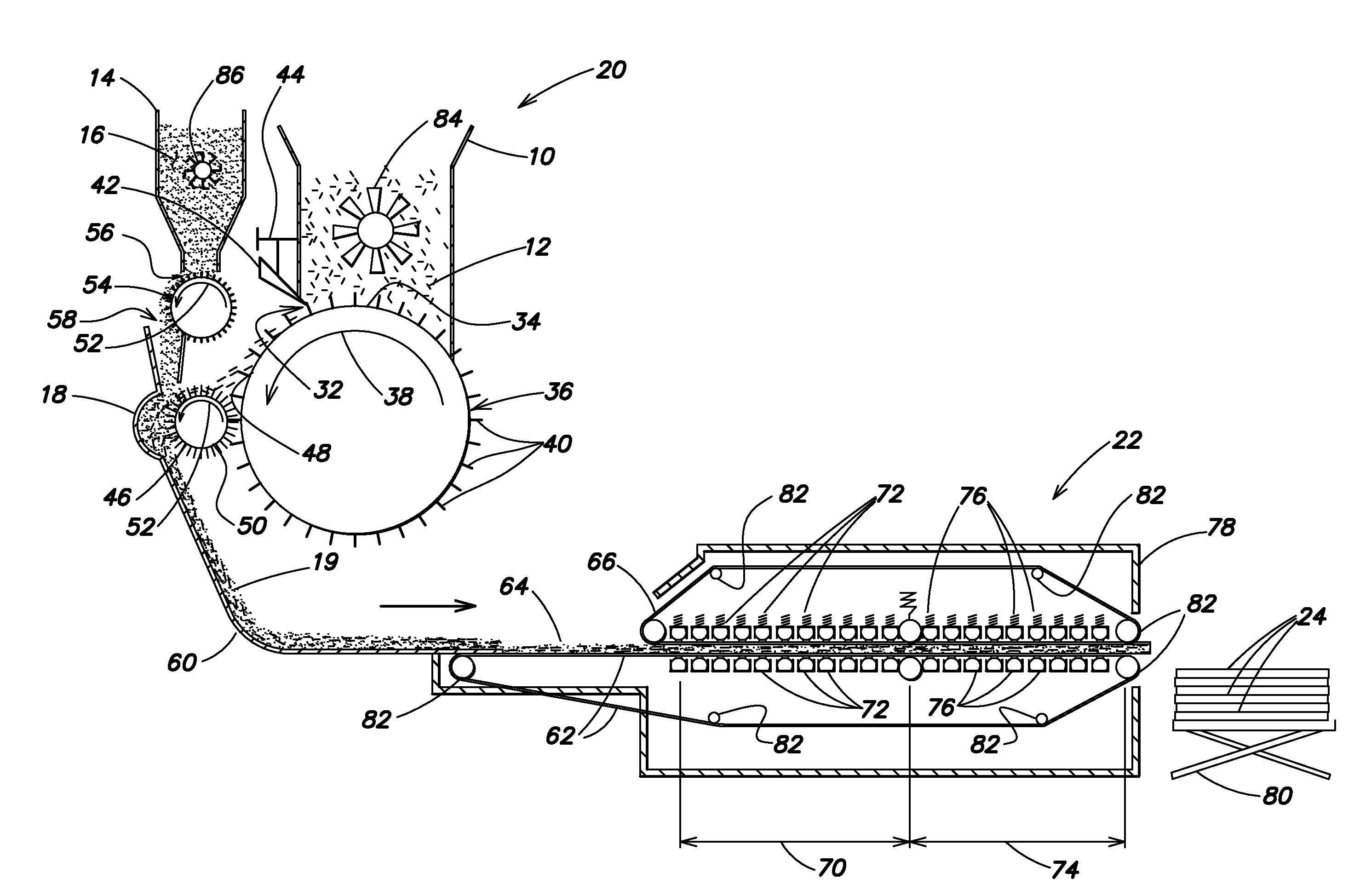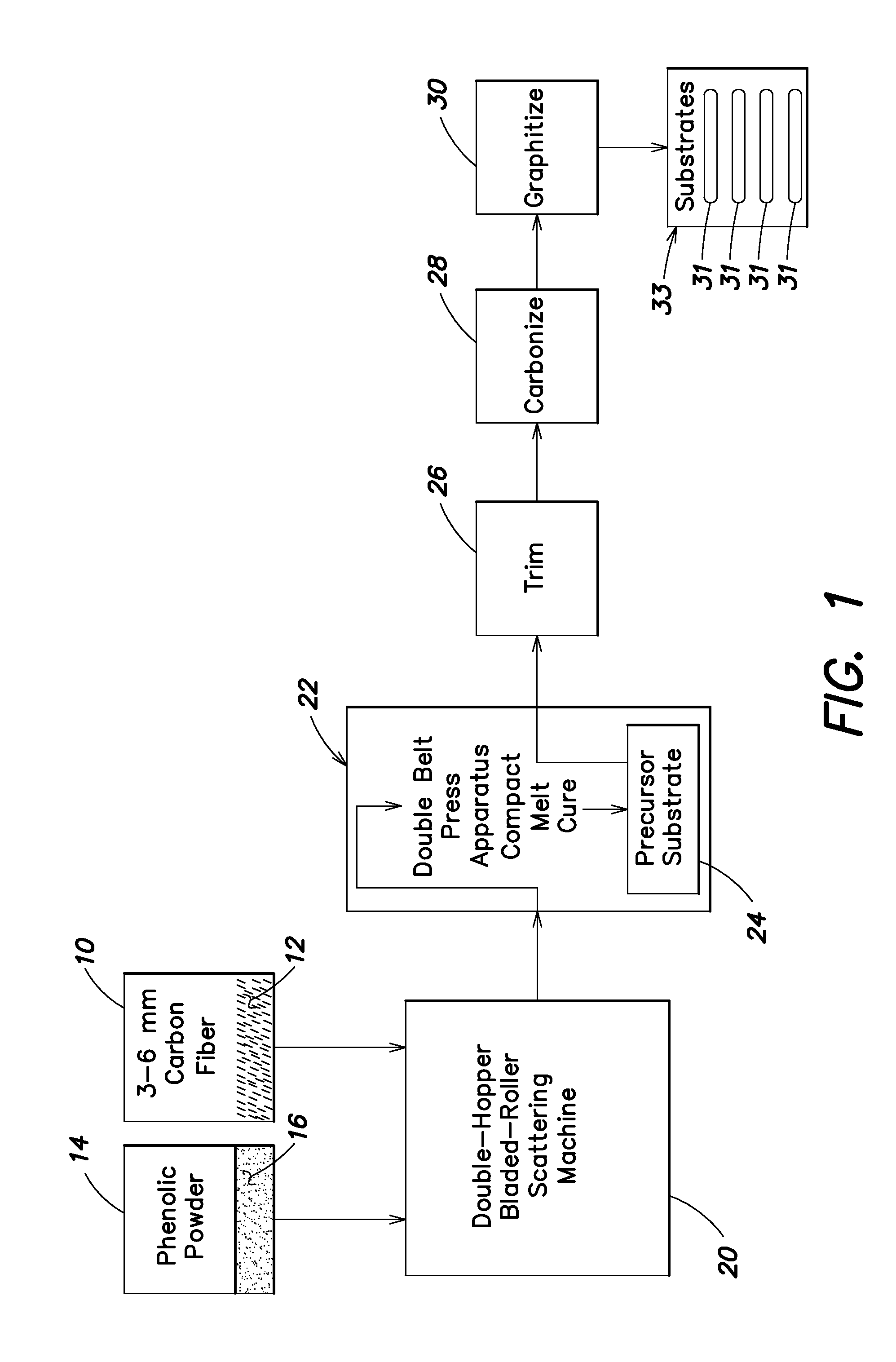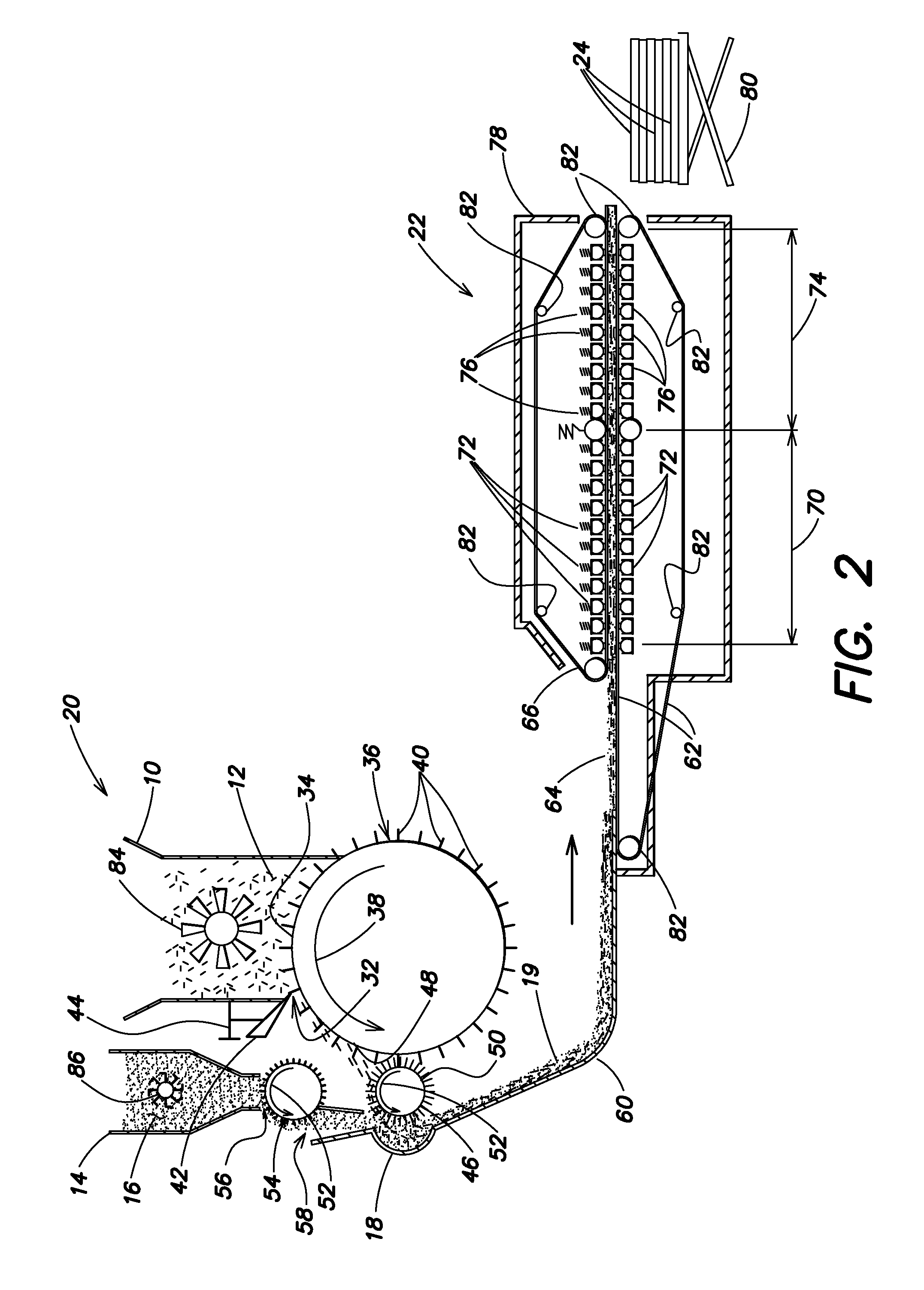Method of manufacturing a dry-laid fuel cell precursor substrate and a substrate
a technology of precursor substrate and fuel cell, which is applied in the direction of cell components, final product manufacturing, sustainable manufacturing/processing, etc., can solve the problems of low flexural strength of substrate, difficulty in achieving homogenous mixture of resin or binder, and difficulty in such dry-laid substrate manufacturing processes utilizing longer carbon fibers, etc. cost reduction
- Summary
- Abstract
- Description
- Claims
- Application Information
AI Technical Summary
Benefits of technology
Problems solved by technology
Method used
Image
Examples
Embodiment Construction
[0017]Referring to the drawings in detail, a simplified schematic representation of a method of manufacture of a dry-laid fuel cell precursor substrate and substrate is shown in FIG. 1 as a sequence of activities. The method includes first loading a first hopper 10 with carbon fibers 12 having a length of between about 3 and 12 millimeters. A second hopper 14 is loaded with a thermoset resin powder 16. The carbon fibers 12 and thermoset resin powder 16 are then directed to flow into a mixing chamber 18 (shown in FIG. 2) of a double-hopper, bladed-roller scattering machine 20. The carbon fibers 12 and thermoset resin powder 16 are mixed together within the mixing chamber 18 so that a mixture 19 thereof includes between about forty percent and about sixty percent carbon fiber 12 and between about forty percent and about sixty percent thermoset resin powder 16. The mixture 19 of carbon fiber 12 and thermoset resin powder 16 is then directed to flow through a double belt press apparatus...
PUM
| Property | Measurement | Unit |
|---|---|---|
| Temperature | aaaaa | aaaaa |
| Temperature | aaaaa | aaaaa |
| Temperature | aaaaa | aaaaa |
Abstract
Description
Claims
Application Information
 Login to View More
Login to View More - R&D
- Intellectual Property
- Life Sciences
- Materials
- Tech Scout
- Unparalleled Data Quality
- Higher Quality Content
- 60% Fewer Hallucinations
Browse by: Latest US Patents, China's latest patents, Technical Efficacy Thesaurus, Application Domain, Technology Topic, Popular Technical Reports.
© 2025 PatSnap. All rights reserved.Legal|Privacy policy|Modern Slavery Act Transparency Statement|Sitemap|About US| Contact US: help@patsnap.com



